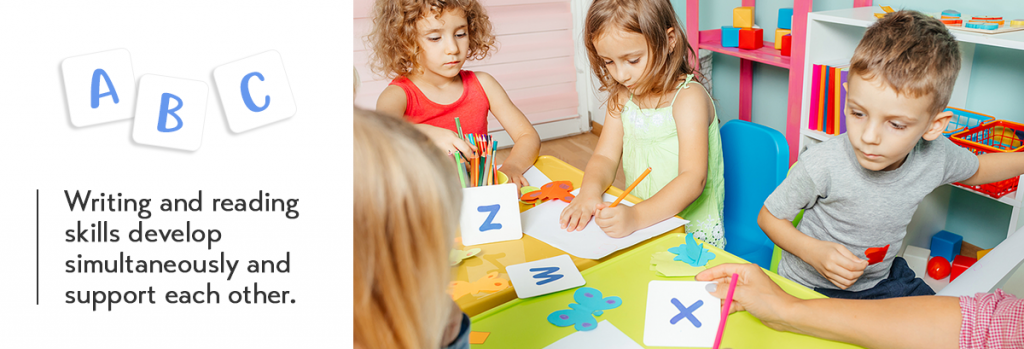
Reading together introduces the child to the world of letters. In order to learn to write, a child must already have good hand-eye coordination, the ability to concentrate, and sufficient skills at handling a pen.
The skills that precede writing can be practiced through play in the following ways:

Rolling small balls out of play dough develops and grows the strength and accuracy of your fingers.

Making puzzles improves concentration, observational skills and dexterity.

Colouring in pictures, following lines and shapes, and cutting with scissors allows a child to develop accuracy, observational skills and concentration.
When a child has developed these basic skills and shows an interest in letters and learning to write, you can support them through play.
Practice the shape of different letters by drawing letters with your finger or a stick on a plate that has salt or sand on it. You can suggest letters to your child by saying them out loud. Then you can think of words that start with that letter. This helps the child learns the shape as well as the sound of the letter.
It is also fun to form letter shapes with your own body, while lying on the floor or standing up.
In a good pen grip, the pen should be between three fingers, and the wrist should be relaxed. Your child will also gradually learn this.
It is common that early on a child writes letters backwards and that some letters are still missing. This usually corrects itself as the child’s skills grow.
As the child learns to write words, ask them to help by writing the shopping list, for example!
Writing and reading skills develop simultaneously and support each other.
Photos: bigstockphoto.com





